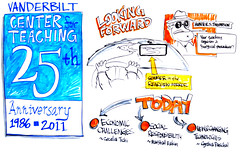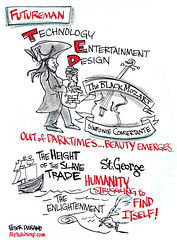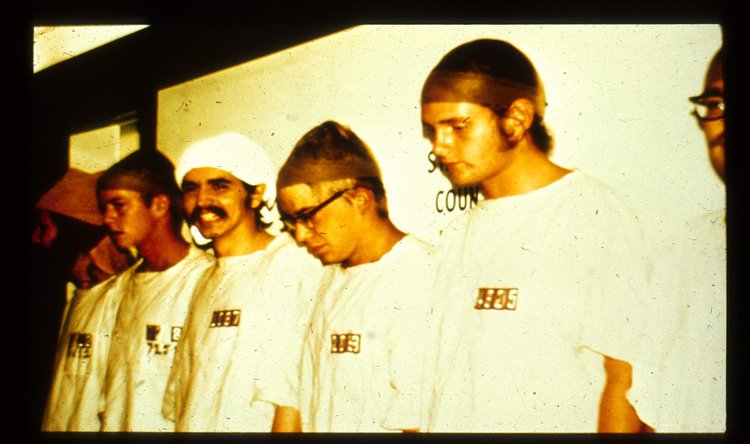Behind the Scenes: The Comspoc® Video
/Earlier this year, we were commissioned by an aerospace company named Analytic Graphics, Inc. (AGI) to create an animation. They were launching new software and service that aids the operation of commercial and military space missions. This is the story of that project.
THE SPACE-TIME CONTINUUM
The minute I heard we were doing a project about space, my mind started turning on final frontiers and galaxies far, far away. But this project hits a little closer to home: to the space immediately surrounding Earth.
Turns out that the space just around our Little Blue Marble is getting rather crowded– with satellites large and small, working and dead, and with chunks of satellites that met with an unfortunate end.
AGI has developed a system of software and hardware called The ComSpOC – The Commercial Space Operations Center – to track these expensive pieces of metal more accurately than has ever been possible. Accurate tracking means that satellite operators can navigate their space objects around dangerous fields of space junk and are more likely to avoid crashing into another satellite and exploding.
That’s kind of a big deal, don’t you think?
We began to see how immense this topic really is, and how vitally important the work of AGI has become. You can thank satellites for weather predictions, the map on your phone, and your ability to binge watch Netflix. And we’re launching more and more satellites into space all the time.
What if we lost these Eyes in the Sky?
A few definite outcomes: You wouldn’t be able to Skype with your mom, you’d lose the GPS in your car, and also we couldn’t accurately predict when and where a hurricane will make landfall.
OUR DIRECTIVE
AGI came to us to make a video. A short animation, explaining what they do and why it’s important, and announce their new SpaceBook platform.
Seems simple: develop a firm grasp of space situational awareness, describe the overwhelming need for more immediate and comprehensive space conservancy, and explain in relative detail the technical aspects of the Operations Center and tracking platform AGI has been developing for years... In less than 500 words.... Riiiiiiiight.
TELLING THE STORY
Thankfully, The ComSpOC team were extremely gracious with their time and energy during this project.
The ComSpOC Director of Marketing (and erstwhile Engineer), Joshua Poley, worked with me on the script to ensure that it covered all of the technical ground it should, and helped me find ways to explain the concepts in the right amount of detail. We then sent the script to the Engineers to re-check that all of the technical aspects were accurate.
With the content finalized, we moved into conceptualizing the piece.
Rather than just put out a series of images portraying the features of a product, it's more effective to show the audience what our sky would look like if we could see all of the objects in orbit around Earth. It was important to tell the story of space as it is, and then show what it will be like in the future– both with and without the services that The ComSpOC provides.
The subject matter called for especially clean, crisp illustrations in the animated whiteboard style. Here you see some of the concept images we generated to show the AGI team the final artwork style.
After the concept was laid out, we went into storyboarding the piece. This is where we go sequence by sequence and roughly draw out what images will be drawn and when.
Our process for storyboarding involves a lot of huddling around a whiteboard sketching out ideas, interrupting each other (and then apologizing), drinking coffee to a medically unsafe extent, and hula-hooping to clear our heads.
Our first task: find a way to display the immensity of space in a 1920 x 1080px frame. Not an easy task on a whiteboard, especially if you want to avoid nauseating camera movements.
I’d love to say that we figured out the layout of images in one go because we’re all geniuses, but basically we had to adjust the positions of images over and over until we got it just right.
After a round of edits to make sure we had the technical aspects correct (Again, thank you, AGI team!), we went into Full Production Mode.
DOWN TO THE DETAILS
For such a complex and detailed piece, every illustration and animation had to be precise, smooth, and meticulous. We packed in a lot of detail on the satellites (which, by the way, the AGI team could name on sight), and added in some easter eggs for fun and texture.
(Did you notice the glove and the toothbrush in the “Hazardous Debris” cloud? Yeah, those are actual catalogued space objects.)
Our animator pulled out some specialities from his bag of tricks, like employing a physics engine on the satellite collision.
The AGI team sent us visualizations of their software in action so that we could make the animations accurate, albeit somewhat scaled-down, and still keep the style of a hand-drawn cartoon.
THE “WHY” OF IT ALL
Even though we spent plenty of time and effort making sure the satellites looked slick and the visualizations were accurate, the real stars of the show are the people.
In all of our pieces, we focus on the human element. Because really, the whole point of AGI working tirelessly to conserve and protect space is so that these satellites can make life better for human beings. The real power behind The ComSpOC is the AGI team — the people who wrote these programs, who developed the SpaceBook platform, who run the Operations Center day in, day out, and sometimes all night long.
THE BIG SHOW
We finished the animation while the folks at AGI were at the annual Space Symposium. I know to some, a Space Symposium sounds like that awful extra credit thing you had to attend in college. But trust me, it’s basically the Space Geek Worlds Fair slash Techapalooza.
We delivered the final video to the AGI team, not thinking anyone would have time to watch it until the Symposium was over.
We were wrong. Almost immediately, I got a call from Josh Poley exclaiming, “It's f***ing awesome!”
Within a few hours, the video was playing on the 20 foot jumbo screen in the main hall of the Symposium. Josh reported that “it is getting a great reception from everyone who sees it. Our CFO says he is going to use it for all of his meetings with Congress and all kinds of high-ranking military [personnel].”
We are absolutely over the moon (*wink*) that this video got out there and began doing its job right away!
Have a look at the full video here. If you’re looking for a team to work with you to create an animation for your company, contact us.
A total Dr. Who fan and Trekkie, Stacy Cohl is Content Developer and Production Lead at Alphachimp Learning Systems, LLC. Stacy also has a degree in Anthropology from Lee University.























